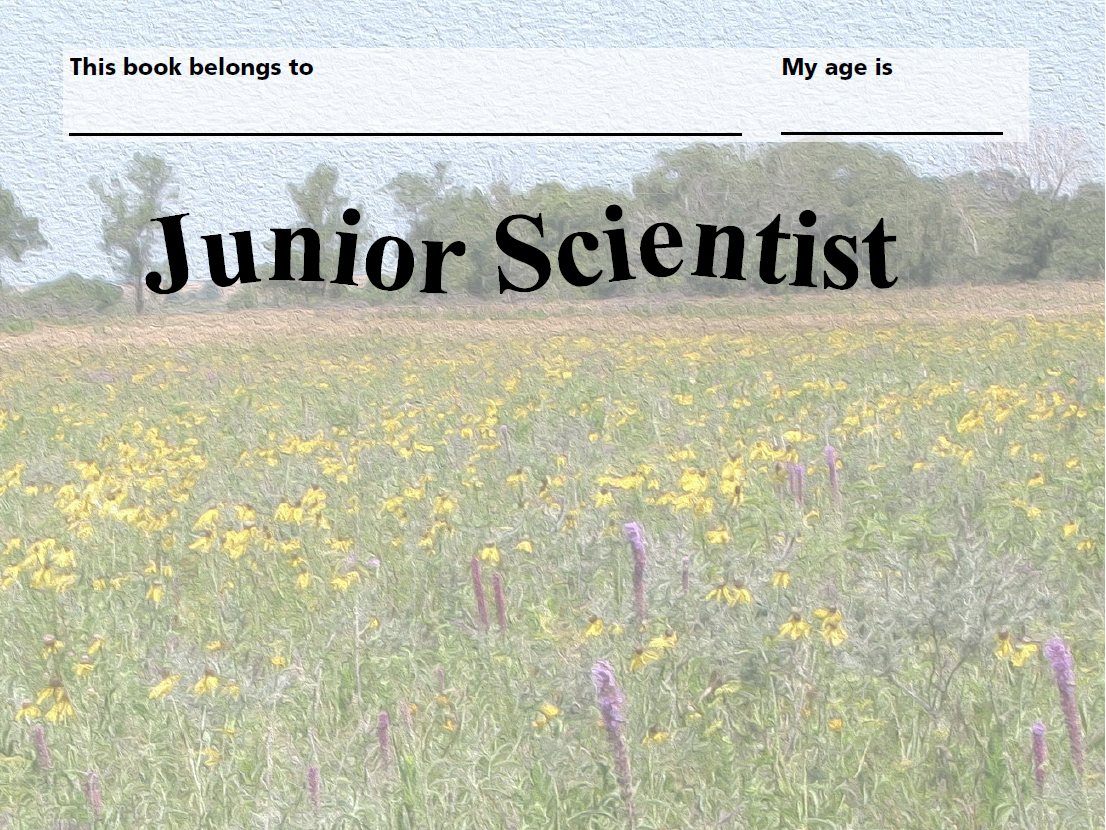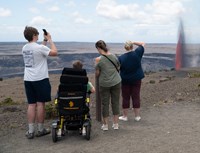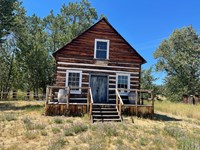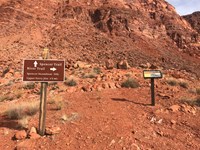- Yellowstone National Park (200)
- Lewis & Clark National Historic Trail (112)
- Golden Gate National Recreation Area (88)
- Point Reyes National Seashore (66)
- Sleeping Bear Dunes National Lakeshore (50)
- Bryce Canyon National Park (44)
- Lava Beds National Monument (40)
- Charles Young Buffalo Soldiers National Monument (39)
- Big Bend National Park (38)
- Show More ...
- Inventory and Monitoring Division (35)
- Geologic Resources Division (27)
- Heritage Documentation Programs (23)
- Natural Resource Stewardship and Science Directorate (18)
- Biological Resources Division (12)
- National Historic Landmarks Program (12)
- San Francisco Bay Area Inventory & Monitoring Network (10)
- One Health (9)
- Sonoran Desert Inventory & Monitoring Network (9)
- Show More ...
Showing 2,390 results for animal diseases ...
- Type: Article
You can be a Heartland Inventory and Monitoring Network Junior Scientist! Explore what it is like to be a scientist that monitors plants, animals, and their habitats national parks. You will explore the 15 parks of the Heartland Network, make observations, identify animals and plants, and learn why scientists use scientific names for organisms. Visit a Heartland Network Park to complete the activities in the booklet or download the booklet here.
Neither Thirst Any More
Bright Angel Trail
- Type: Place
Bright Angel Trail lets hikers walk in the footsteps of the canyon's Indigenous Peoples, miners, and early tourists, as they descend into the canyon's depths. Offering big views, morning and afternoon shade, resthouses, vault toilets, and water stations during the summer. As of April 13, 2025, the water is ON at 1.5- and 3-mile resthouses and Havasupai Gardens. Portions of Bright Angel Trail are closed for waterline construction, Visit the link for a list of trail closures.
Eruption Viewing from Uēkahuna
- Type: Place
The overlook at Uēkahuna offers great views into Halemaʻumaʻu crater and surrounding areas from the summit of Kīlauea volcano. Located at the end of Crater Rim Drive West, a 2.8 mile (7 minute) drive from the entrance station. Family-friendly location with ranger's on-site for information. More available parking compared to other locations.
Eruption Viewing from Kūpinaʻi Pali
- Type: Place
Escape the crowds and experience the eruption in solitude. This vantage point offers stunning wide-angle views of the caldera, being the furthest overlook from the eruption. Located at the end of Crater Rim Drive West, a 0.3 miles (2 minute) drive from the entrance station. Parking available near the closed Kīlauea Visitor Center. Hike 0.5 miles (20 minutes) towards Volcano House hotel and southeast on Crater Rim Trail.
Eruption Viewing near Keanakākoʻi Overlook
- Type: Place
Eruption viewing from the overlooks near Keanakākoʻi offers close-up views but requires planning. Parking is extremely limited between 5 p.m. and 9 p.m., so it's best to visit outside these hours. Have a Plan B if parking is full. The site requires a 2-mile round-trip hike (about 1 hour) from Devastation parking area. Additional parking at Puʻupuaʻi Overlook an additional 0.5 miles.
Eruption Viewing from Wahinekapu
- Type: Place
Experience the heat from nearby steam vents as you take in the breathtaking views of the eruption, with unobstructed, panoramic views of the entire cinder cone. Located on Crater Rim Drive West, 1 mile (4 minutes) from entrance station. A popular, but congested spot due to being the first overlook you encounter upon entering the park.
Eruption Viewing from Kīlauea Overlook (Kapalikapuokamohoaliʻi)
Jim Beckwourth Cabin Museum
- Type: Place
Jim Beckwourth, the African-American mountain man, scion of British nobility, great medicine and warrior chief in the Crow Indian Nation, US Army scout and courier, and discoverer of Beckwourth Pass and trail, settled here on his road for 7 years. He created several things we still have: Beckwourth Pass and Trail, located by Trails West markers, this cabin, and a national best seller biography, The Life and Adventures of James P. Beckwourth, 1856.
Andersonville's Treasured Magnolias: A Story of Preservation and Renewal
- Type: Article
Spencer Trail
“Can This Flesh Belong to Any Man...?”: George and Rebecca Latimer’s Flight to Freedom
- Type: Article
In 1842, freedom seekers George and Rebecca Latimer arrived in Boston after escaping slavery in Virginia. Though Bostonians quickly secured George’s freedom, the Latimer case provided antislavery activists the political capital to usher in a statewide Personal Liberty Law, known as the "Latimer Law." Though largely remembered for the law that bears their name, the Latimers’ story also provides a powerful lesson of family resilience, community protest, and social change.
Fingerweaving
- Type: Article
Fingerweaving is the art of making material with the fingers instead of a loom. Prior to European contact Indigenous peoples in North America wove and twined with plants and animal fibers for a multitude of purposes. We know the beautiful, dense, warp-faced arrow and lightning motif sashes created by changing the weft that we associate with the Fur Trade are uniquely tied to North America.
Glen Haven General Store
- Type: Place
There was only one place in the late 19th century and 20th century that provided the necessities for life-meat, produce, fabrics, communication and tools: the General Store. It was the hub of D.H. Day's company. The lumbermen and dock workers were paid in company "scrip" so they could only shop at this store. At different times in its history, the store served as a post office, ticket and freight office for steamers, telegraph station, lumber salesroom, and more.
Ledges Overlook
USS Utah Memorial
- Type: Place
On December 7, 1941, Oklahoma's port (left) side was hit by eight torpedoes at the very start of the attack. In less than twelve minutes, she rolled over until her masts touched the bottom, trapping hundreds of men inside and under the water. Four hundred twenty-nine crew members died. Of those trapped inside, only 32 could be rescued.
Hanka Homestead Museum
- Type: Place
The Hanka Homestead was occupied by members of the Hanka family, Finnish immigrants, from 1896 until 1966. Herman Hanka settled here with his family after he was injured in a copper mining accident. The farm was originally homesteaded at a time of mass immigration from Finland to the United States. The homestead is relatively intact and unaltered from its appearance in the 1920s. This museum is an official partner of Keweenaw National Historical Park.
Alcove Nature Trail (Colorado National Monument)
Historical and Future Climate Patterns at Rocky Mountain National Park: Some Biological Implications
- Type: Article
Climate change has the potential to profoundly alter national parks, affecting plants, animals, and cultural resources. During this time of unusually rapid change, proactive management—planning ahead—has a better chance of success than reacting to crises after they arise. This article compares historical climate patterns at Rocky Mountain National Park with future projected conditions to help park managers proactively plan for climate change.




















